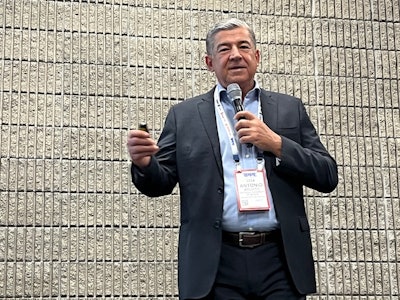
At the very end of last week’s International Production & Processing Expo (IPPE) activities in Atlanta, I attended the International Rendering Symposium organized by the North American Renderers Association (NARA). It was an interesting program focused on sustainability and how rendered products positively impact animal production, with a wide international presence among the speakers and attendance.
The presentation that attracted my attention was the one on “The Use of Animal Proteins in Chicken and Egg Production” given by Antonio Aburto, Ph.D. Dr. Aburto is a well-known Mexican nutritionist, with more than 25 years of experience at Bachoco in Mexico (one of the top 10 world chicken producers), so it was worth it to hear what he had to say.
He gave a very thorough explanation with data on how poultry nutrition and production has been improving in the past 30 years or so. The comparisons were impressive, and improvements have been consistent. For instance, in the U.S., average broiler weight has increased from about 2 kg (4.4 lb.) in 1988 to about 3 kg (6.8 lb.) in 2022, with a feed conversion rate of 2.07 to 1.75 respectively. The days needed to gain 2.3 kg (5 lb.) have decreased from around 52 in 1992 to 40 in 2022. The same is with laying hens – 280 eggs per hen housed were produced in 1990, whereas in 2020 that amount increased to 500.
What does this mean? That the poultry industry is producing more with less. It is becoming more and more sustainable. This is something that must be emphasized in communications with the general public.
Now, rendered products play a very important role in this. Aburto said poultry are omnivorous animals, so they present no objections to consuming these marvelous animal protein ingredients. For the producer, rendered animal protein ingredients are a relatively inexpensive source of excellent nutrients that lower feed formulation cost. In the case of Mexico, animal protein from rendered ingredients for broilers and layers can save US$2 to US$3 for every 1% of inclusion rate per metric ton.
So, animal proteins have the potential to be excellent feed ingredients for poultry, plus, they improve the poultry industry’s sustainability, since it is recycling and is part of the circular economy.
What do you think?
















